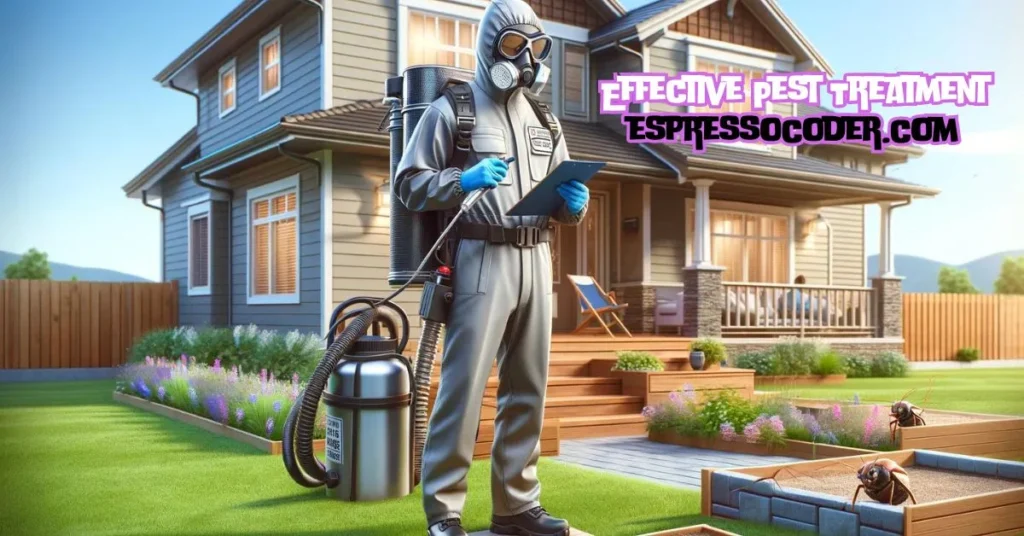Dealing with pests can be a real nightmare. Whether it’s ants marching through your kitchen or rodents scratching in your attic, pest infestations are not only a nuisance but can also pose serious risks to your health and property.
In this article, we’ll explore the crucial role that pest assessments play in achieving effective pest treatment. We’ll dive into what these assessments involve, how they help identify specific pest issues, and how they guide the development of targeted treatment plans. By the end, you’ll understand why a thorough pest assessment is an essential first step for long-term pest control success.
KEY TAKEAWAYS
- Pest assessments provide crucial information to develop effective pest treatment strategies.
- They involve inspections to identify pest species, population levels, and conducive conditions.
- Assessment findings guide experts in selecting appropriate treatment methods and preventative measures.
- Ongoing monitoring and follow-up assessments ensure pests are eliminated long-term.
Contents
Understanding Pest Assessments
When you realize you have a pest problem and want to get pest treatment from a reputable company, the first step is a comprehensive assessment of your property. An experienced exterminator will conduct this evaluation to detect the presence of pests and gauge the severity of the infestation.
They rely on various techniques like visual inspections, deploying monitoring devices, and setting traps to gather data. Why are these assessments so crucial? You can’t develop an effective strategy without first understanding the opponent you’re up against.
Pest assessments allow the experts to accurately identify the specific critter species causing issues and analyze the environmental conditions that are allowing them to thrive on your property. This detailed information lays the groundwork for developing a targeted, efficient control plan tailored to your situation.
Identifying Pest Species and Infestation Levels
The first step in any pest assessment is pinpointing exactly what type of pest you’re dealing with. Seemingly minor differences between species can have major implications for choosing the right treatment approach.
An experienced exterminator can spot telltale signs of pest activity like droppings, gnaw marks, or nesting materials. They’ll also look for indications of how widespread the infestation is by estimating population sizes.
Let’s say the assessment reveals a colony of carpenter ants tunneling through your home’s framing. Knowing the species allows the pro to select pesticides formulated specifically for carpenter ants. Mapping out the full extent of the tunnels ensures no part of the infestation gets missed during treatment.
Evaluating Environmental Factors and Entry Points
Pests don’t just randomly show up out of nowhere. Conducive conditions like food sources, excess moisture, poor sanitation, and easy entry points are what allow them to gain a foothold in the first place.
During an assessment, experts are on high alert for environmental risk factors that attract and sustain pest populations. They’ll scope out potential entry points like cracks in foundations, gaps around utilities, and poor window/door seals that serve as pest superhighways.
Once those risk factors are identified, the treatment strategy can incorporate exclusion methods (sealing entry points), sanitation measures (removing food/water sources), and habitat modifications to make the area less hospitable for pests.
Developing Targeted Treatment Plans
With all the insights gleaned from a comprehensive assessment, pest control technicians can now formulate a targeted, multi-pronged treatment plan customized for that specific situation.
Depending on the type of pest, biology, and extent of the infestation, the plan might include:
- Targeted application of pesticides (sprays, baits, and dusts)
- Trapping and removal of pests
- Exclusion techniques to seal off entry points
- Environmental modifications to eliminate conducive conditions
The assessment data allows pros to strategically deploy a range of chemical and non-chemical methods for maximum effectiveness while minimizing risks to people and pets.
Monitoring and Follow-up Assessments
Even after an initial treatment, pests can come creeping back if conditions remain hospitable. That’s why consistent monitoring and follow-up assessments are crucial for long-lasting pest control success.
Experts will establish a regular monitoring schedule using tools like pheromone traps and inspection devices. If they detect any continued pest activity, the original treatment strategy can be adjusted as needed through additional targeted applications.
Thorough assessments followed by vigilant monitoring create a cycle of integrated pest management that puts pests on permanent defense.
Closing Thoughts
As this article has demonstrated, pest assessments play an indispensable role in the quest for effective pest treatment and long-term prevention. By accurately identifying pests, pinpointing infestation hotspots, and evaluating risk factors, assessments lay the groundwork for developing customized treatment strategies. They allow professionals to deploy an arsenal of targeted methods while minimizing potential hazards. Combined with vigilant monitoring, comprehensive assessments are the first strategic step in winning the battle against unwanted home invaders.

